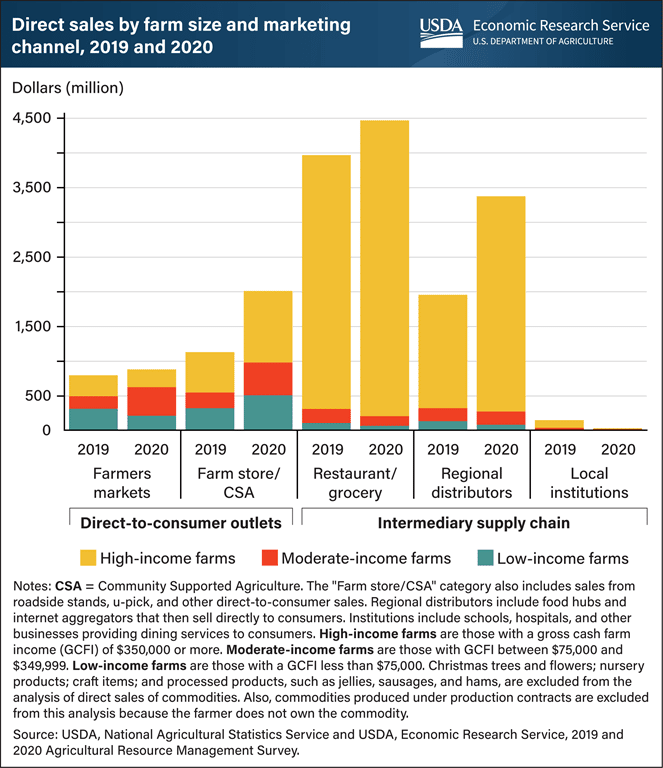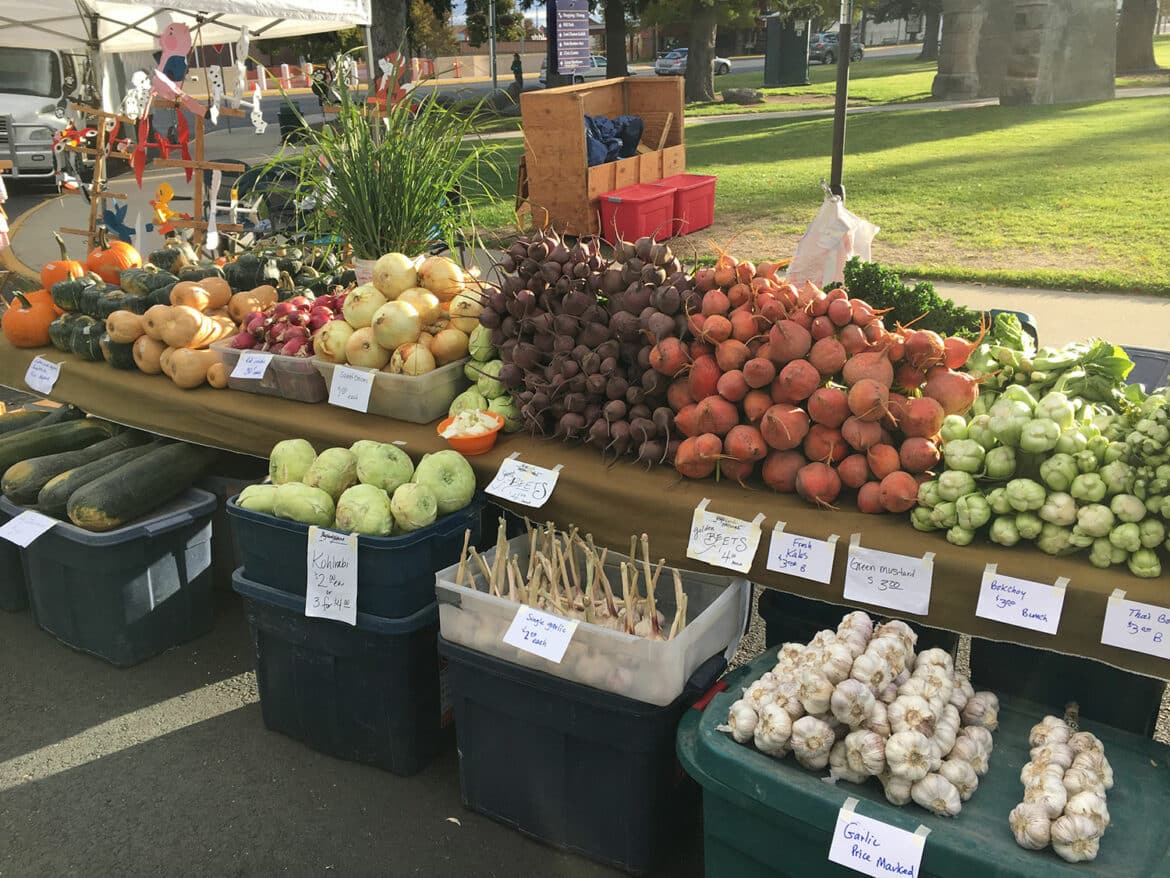Information updated by USDA’s Economic Research Service shows in 2020, U.S. farms sold almost $10.7 billion of food commodities directly to consumer outlets and supply chains. This includes restaurants, grocery stores, regional distributors, and local institutions. The figure is nearly $2.8 billion, or 35 percent more than sold in 2019.
From 2019 to 2020, sales at farmers markets and restaurants and grocery stores increased by 11 and 13 percent, respectively, whereas sales at farm stores, community-supported agriculture, and other direct-to-consumer channels increased by 79 percent. Meanwhile, sales to regional distributors increased by 73 percent.
However, sales to local institutions declined by 86 percent in 2020 relative to 2019, likely because of closures or restricted operations related to the COVID-19 pandemic. Overall, in 2020, 73 percent of total direct sales occurred through intermediary supply chains, while the remaining 27 percent were direct-to-consumer outlets.

High-income direct sales farms, defined here as those with gross cash farm income (GCFI) of $350,0000 or more, increased their direct sales by $2.4 billion (38 percent) from 2019 to 2020, which accounted for 81 percent of all direct sales. Among low-income direct sales farms, defined as those with GCFI less than $75,000, 85 percent of their direct sales were though direct-to-consumer outlets in 2020.
USDA adds that about seven percent of America’s two million farms sold commodities through direct-to-consumer outlets, and almost 1 percent sold through intermediary supply chains. The other 93 percent of U.S. farms sell their commodities via other marketing channels, such as feedlots, slaughterhouses, ethanol processors, grain mills, etc.
###
NAFB/USDA


